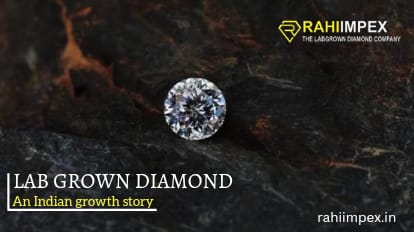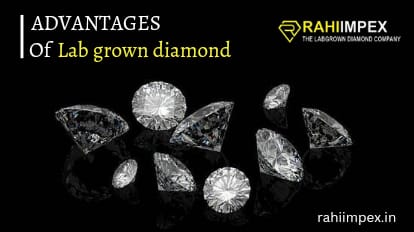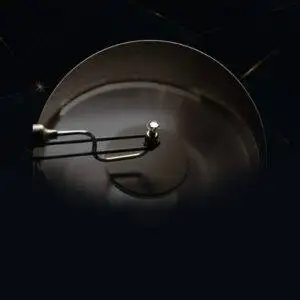Diamonds are considered a timeless symbol of love and beauty, and for centuries, people have been fascinated with these precious gems. But with the rise of lab-grown diamonds, the diamond industry has undergone a major transformation. Here are 20 interesting facts about lab-grown diamonds that you might not know.
- Lab-grown diamonds are real diamonds : Lab-grown diamonds are not fake or imitation diamonds. They are grown in a lab using advanced technology that replicates the same conditions that create natural diamonds deep within the Earth’s crust.
- Lab-grown diamonds are eco-friendly : The process of mining natural diamonds is extremely destructive to the environment. It involves large-scale excavations, the use of heavy machinery, and the release of pollutants into the air and water. In contrast, lab-grown diamonds are created using sustainable and eco-friendly methods, leaving a much smaller carbon footprint.
- Lab-grown diamonds are more affordable : Lab-grown diamonds are generally less expensive than natural diamonds of comparable quality. This is because they do not require the same level of mining and processing as natural diamonds.
- Lab-grown diamonds are just as durable as natural diamonds : Lab-grown diamonds have the same physical and chemical properties as natural diamonds, making them just as hard and durable.
- Lab-grown diamonds come in a range of colors : While natural diamonds are mostly colorless, lab-grown diamonds can be produced in a variety of colors, including yellow, pink, blue, and even red.
- Lab-grown diamonds are certified : Lab-grown diamonds are certified by the same independent gemological laboratories that certify natural diamonds. This means that they are held to the same high standards of quality and authenticity.
- Lab-grown diamonds are ethical : The diamond industry has a history of human rights abuses, including forced labor and child labor. By choosing lab-grown diamonds, consumers can be sure that they are not contributing to these unethical practices.
- Lab-grown diamond manufacturers are popping up all over the world : While the technology for creating lab-grown diamonds was first developed in the United States, today, there are lab-grown diamond manufacturers in countries all over the world. India has emerged as a major hub for lab-grown diamond manufacturing, with many companies specializing in the production of high-quality lab-grown diamonds.
- Lab-grown diamonds are disrupting the diamond industry : The rise of lab-grown diamonds has caused a major disruption in the diamond industry. Many traditional diamond retailers are now offering lab-grown diamonds alongside their natural diamonds, and some companies are even choosing to exclusively sell lab-grown diamonds.
- Lab-grown diamonds are the future of the diamond industry : As consumers become more aware of the benefits of lab-grown diamonds, it is likely that the demand for natural diamonds will continue to decrease. Lab-grown diamonds offer a more sustainable, affordable, and ethical alternative to natural diamonds, making them the future of the diamond industry.
- Lab-grown diamonds can be made in larger sizes than natural diamonds : While natural diamonds larger than a few carats are rare and expensive, lab-grown diamonds can be produced in much larger sizes without sacrificing quality or value.
- Lab-grown diamonds can be made in a matter of weeks : While it can take millions of years for natural diamonds to form, lab-grown diamonds can be produced in a matter of weeks using advanced technology and processes.
- Lab-grown diamonds are indistinguishable from natural diamonds to the naked eye : Without specialized equipment, it is almost impossible to tell the difference between a lab-grown diamond and a natural diamond. This means that lab-grown diamonds are a great choice for those who want the look and feel of a natural diamond without ethical or environmental concerns.
- Lab-grown diamonds are not synthetic diamonds : Synthetic diamonds are created using different processes than lab-grown diamonds and are often used in industrial applications rather than in jewelry. While lab-grown diamonds and synthetic diamonds are both man-made, they are not the same thing.
- Lab-grown diamonds are becoming more popular in the bridal market : Many couples are choosing lab-grown diamonds for their engagement rings and wedding bands due to their affordability, eco-friendliness, and ethical considerations. This trend is expected to continue to grow in the coming years.
- Lab-grown diamonds are free of impurities and flaws : Because they are grown in a controlled environment, lab-grown diamonds are less likely to have impurities or flaws that can affect their clarity or color. This means that they can be of a higher quality than some natural diamonds.
- Lab-grown diamonds can be used in the same way as natural diamonds : Lab-grown diamonds have the same physical properties as natural diamonds, which means that they can be cut, polished, and used in the same way as natural diamonds. This makes them a versatile choice for jewelry designers.
- Lab-grown diamonds are traceable : Because they are produced in a controlled environment, lab-grown diamonds can be easily traced back to their origin. This makes them a more transparent and accountable choice for consumers who want to know where their diamonds come from.
- Lab-grown diamonds are popular with younger consumers : Millennials and Gen Z consumers are more likely to choose lab-grown diamonds over natural diamonds due to their environmental and ethical concerns. This trend is expected to continue as these consumers become a larger part of the diamond market.
- Lab-grown diamonds can be customized : Lab-grown diamonds can be produced in a variety of shapes and sizes, and can even be customized with specific colors or designs. This makes them a great choice for those who want a unique and personalized piece of jewelry.
In conclusion, lab-grown diamonds are a fascinating alternative to mined diamonds, offering many benefits such as sustainability, affordability, and customization. As technology advances and consumer preferences evolve, it will be interesting to see how the diamond industry continues to adapt to meet changing demands. Whether you choose a lab-grown or mined diamond, both options offer their own unique qualities and beauty.







Your article helped me a lot, is there any more related content? Thanks!